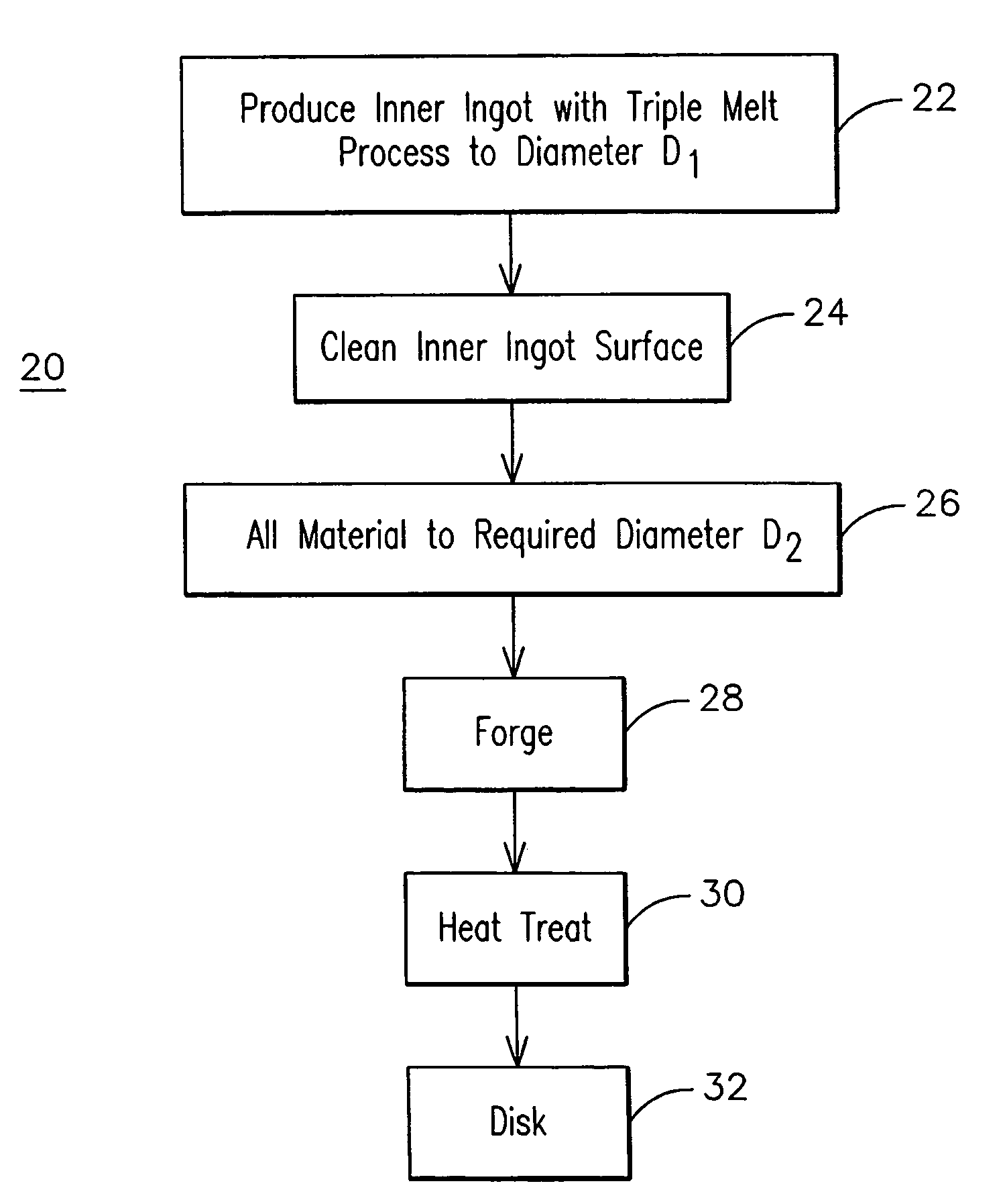Method of manufacturing a rotating apparatus disk
a technology of rotating apparatus and manufacturing method, which is applied in the direction of machines/engines, solid-state devices, metal rolling stands, etc., can solve the problems of var often introducing defects into the ingot, difficult to achieve a cooling rate, and difficult to produce in large diameters
- Summary
- Abstract
- Description
- Claims
- Application Information
AI Technical Summary
Benefits of technology
Problems solved by technology
Method used
Image
Examples
Embodiment Construction
[0007]A large ingot 10 including nickel-iron based superalloy material is formed by a process that will minimize the possibility of segregation and other melt related defects, and is thus well suited for subsequent forging operations. Ingot 10 includes an inner core portion or inner ingot 12 that may be formed using a traditional triple melt technique including vacuum induction melting (VIM), electroslag remelting (ESR), and vacuum arc remelting (VAR). Advantageously, the inner ingot 12 is formed to have a size wherein the triple melt technique or other technique used provides a sound ingot; that is, one uniform and free of a detrimental degree of microsegregation, macrosegregation and other solidification defects, even using segregation-prone materials such as Alloy 706 or Alloy 718. Depending upon the material and the particular process parameters selected, an inner ingot 12 having a dimension such as diameter D1 as large as 30 inches or more may be produced using known triple mel...
PUM
| Property | Measurement | Unit |
|---|---|---|
| diameter | aaaaa | aaaaa |
| diameter D1 | aaaaa | aaaaa |
| dimension | aaaaa | aaaaa |
Abstract
Description
Claims
Application Information
 Login to View More
Login to View More - R&D
- Intellectual Property
- Life Sciences
- Materials
- Tech Scout
- Unparalleled Data Quality
- Higher Quality Content
- 60% Fewer Hallucinations
Browse by: Latest US Patents, China's latest patents, Technical Efficacy Thesaurus, Application Domain, Technology Topic, Popular Technical Reports.
© 2025 PatSnap. All rights reserved.Legal|Privacy policy|Modern Slavery Act Transparency Statement|Sitemap|About US| Contact US: help@patsnap.com


